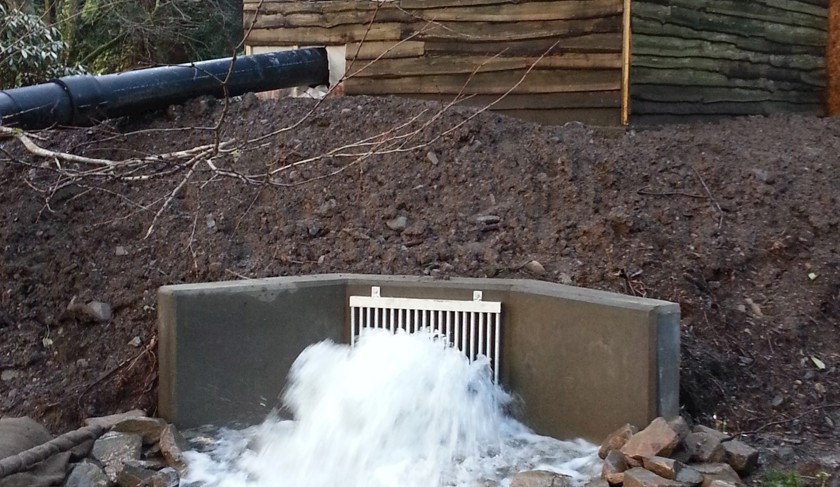Dawyck's hydro-electric scheme
Dawyck House was one of the first houses in Scotland to have its own electricity supply. The early Victorian hydro-electric system used water from the Scrape Burn which runs through the Garden. The old Dynamo House was situated in the middle of the Garden not far from the house.
By the time RBGE acquired the Garden in 1978 the system had long since been replaced by a supply from the national grid. The remaining infrastructure had fallen into disrepair and been removed.
With increasing interest in sustainability and the need to reduce carbon emissions, we decided to reintroduce a hydro-electric system using new technology. Depending on the flow of the burn it can produce enough electricity to meet our demands plus surplus energy which we can sell to the grid Power output and carbon savings are displayed on a meter inside the Visitor Centre.
Fergus Ewing MSP, Minister for Energy, Enterprise and Tourism launched the hydro-electric scheme at Dawyck Botanic Garden in May 2014, making it the first carbon neutral botanic garden in the UK.
The scheme, which benefited from a £30,000 grant from EDF Energy’s Green Fund, provides enough electricity to power both the Garden’s Visitor Centre as well as the year-round maintenance of the Garden’s infrastructure. Heating for the Visitor Centre, which was built in 2008, is provided by a sustainable biomass boiler. Surplus electricity is sold back to the national grid at times of low demand through the feed in tariff, creating a welcome new income source for Dawyck.
The system is powered by the Scrape Burn, a tributary of the River Tweed, which runs through the Garden. It produces, at peak flow, an average of 238 kWh per day, which at any given time is enough electricity to power 25 family homes. The power generated is enough to run the garden Visitor Centre and maintenance building, with the excess being exported to the National Grid, providing a welcome income source for the RBGE.
There is also a display above the Visitor Centre notice board that displays the current instantaneous generation and the total CO2 savings.

Dawyck hydropower turbine generated 59,212 kWh in 2017/18 an increase of 44% from 2016/17. This energy is exported to the grid as electricity: a considerable contribution to a reduction in the use of finite resources at this site. The turbine was improved further in FY 16/17, and this has facilitated improved generation in FY 17/18.
The Visitor Centre
The state-of-the-art Visitor Centre, which opened in 2008 includes a shop, café and art gallery/studio. Heating and hot water for the Centre is provided by a cutting edge biomass (wood fuel) boiler and the Centre also has a central solar skylight with heatsink wall. Additionally the building has heat-retaining and glare-reducing glass throughout. The roof is carpeted with sedum which assists with thermal gain in the winter and aids efficient cooling in the summer. The biomass (woodchip) boiler reduces the amount of C02 released into the atmosphere.
Green roof
The Visitor Centre's green roof helps to insulate the building and therefore regulates the temperature throughout the year. In winter it keeps the heat in, and in the summer provides a relatively cool environment. The plants used are primarily low growing, drought tolerant sedum plants, but there can also be many saxifrage, wild grasses, and mosses. Initially 13 species of sedum were in the shallow free-draining substrate blanket, but only the most suitable will have survived and flourished. The green roof is also a habitat which is home to and provides food for many different types of insects such as bumblebees and invertebrates.
This is a relatively low maintenance roof but does require an annual maintenance programme to encourage the sedum to thrive. The sedum plants can survive extended periods of dry weather because, built into the substrate material, there is a fleece layer that holds water which the plants then store in their fleshy leaves. During the winter these fleshy leaves store less water making them more frost tolerant. The use of these plants softens the look of the building throughout the year and the different seasons bring different colours.

